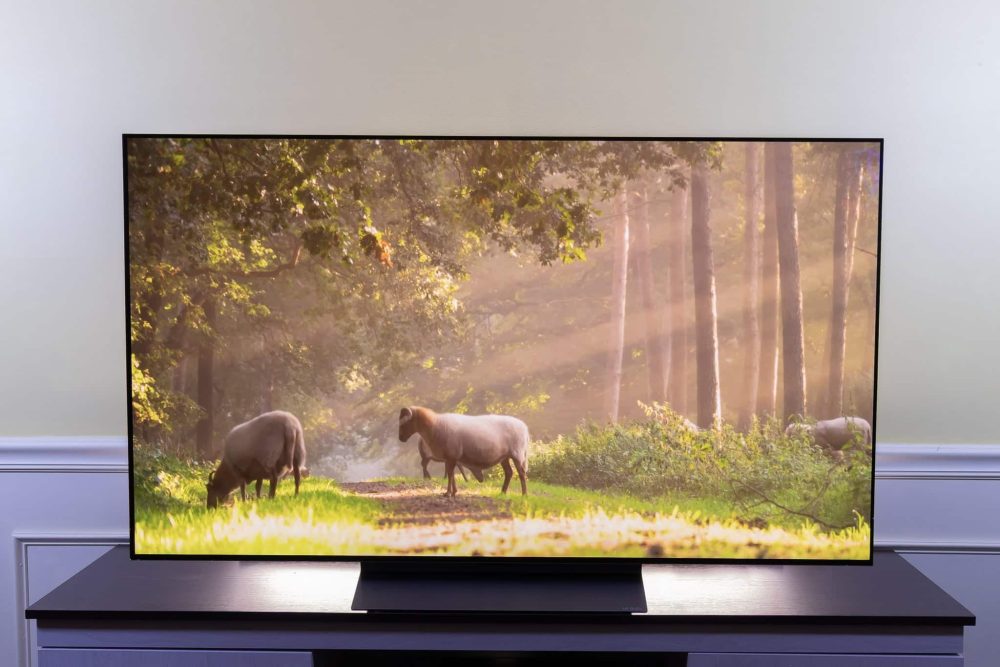OLED TVs are loved for their deep blacks, perfect contrast, and accurate colors. But to keep that picture quality intact for years, you need to let the TV take care of itself. Modern OLEDs include protection mechanisms against burn-in and uneven wear, and the worst thing you can do is interfere with them.
Why OLED TVs Need Self-Protection
Each pixel on an OLED TV emits its own light and can turn completely off, which is why blacks look so good. But those pixels are made from organic materials, which age over time. If certain areas of the screen show static elements for too long, channel logos, news tickers, game HUDs, and menus- those pixels can wear out faster, leading to image retention or even permanent burn-in.
To prevent this, manufacturers have built in automatic maintenance systems, often called:
- Pixel Cleaning / Pixel Refresh
- Panel Refresh / Compensation Cycle
These run in the background and help keep the panel uniform.
There are usually two types:
- Short Compensation Cycle:
Runs automatically after a few hours of use (around every 4 hours) when the TV goes into standby. It lasts a few minutes and fixes minor irregularities. - Long Compensation Cycle (Manual or Scheduled):
Runs every 1,500–2,000 hours, or when manually triggered. It can take from 30 minutes to over an hour and works more aggressively to restore uniformity.
During these cycles, the screen may go black, show a line, or look “off” for a while. That’s normal.
The Big Mistake: Manual Interference
The most common harmful mistake is manually running long pixel refresh cycles too often or interrupting them.
Each long cycle puts extra “stress” on the panel. Manufacturers have carefully tuned how often these should run. Forcing them more frequently can:
- Reduce overall brightness
- Cause instability or weird behavior that may require a reset
- Disrupt the automatic wear compensation logic
- Shorten the TV’s lifespan
Likewise, unplugging the TV from the wall right after you turn it off can prevent these automatic cycles from running at all.
When Manual Refresh Might Help
Manual pixel refresh can be helpful in specific cases:
- Visible lines or uniformity issues right after installation or transport
- Frequent power cuts or habitually unplugging the TV, which may have interrupted automatic cycles
- Strong image retention that doesn’t disappear after some regular use
Even then, it should be an occasional fix, not a routine. Always follow the manufacturer’s instructions.
Extra Protection Features
Most OLED TVs also include:
- Screen Saver: Activates when a static image is detected.
- Pixel Shift / Screen Shift: Moves the image slightly to spread wear.
- Logo Luminance Adjustment: Lowers the brightness of static logos.
These work together silently; you generally don’t need to touch them.
Best Practices for OLED Longevity
- Don’t unplug after every use – turn the TV off with the remote and let standby handle maintenance.
- Avoid static images for long periods – vary the content, especially logos or game HUDs.
- Keep it cool and ventilated – don’t block vents or place it near heat sources.
- Protect from direct sunlight.
- Clean gently with a dry microfiber cloth only.
In short, let your OLED TV run its automatic maintenance and don’t overuse manual refresh. Interfering with these systems is the “invisible” mistake that can quietly damage your screen over time.



Hej – jag har en Philips Oled 65” som är 11-12 år gammal. Sååå nöjd men andra se det inte jag ser* och det är att det ”slår över grönt” i vissa partier. Kan det helt enkelt vara så att det är dags att byta. Jag har bra wifi (1000/1000) så där ligger det inget.
Kan man sälja en begagnad som ovan.
*blir troligtvis lite hemmablind så jag ser inte riktigt felen.
which oled screen do you own? mine stopped forcing oled protect cycles after a firmware update so it is fixed
Exakt modell vet jag inte men det är en Philips Oled 65”. Dyr när jag köpte den för 11-12 år sedan.